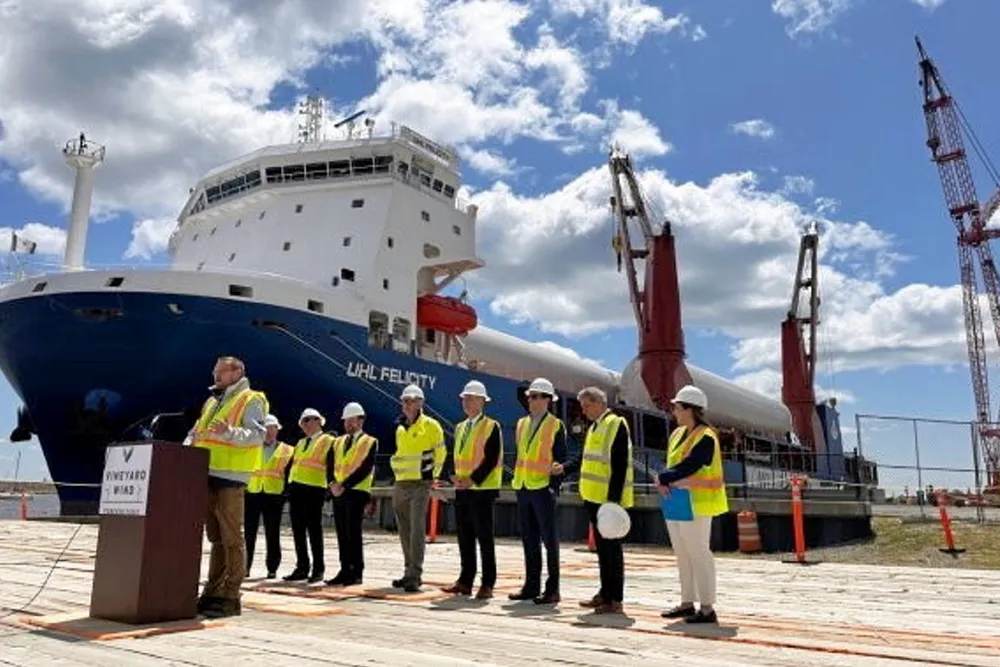Amid Trump threats and turbulence, ACP stays bullish on US offshore wind
Industry body cites $65bn investment by developers by 2030

US developers are on pace to invest $65bn in offshore wind projects by 2030, driving installation of 14GW of commercial generation capacity and creation of 56,000 jobs, with deployment set to almost triple in the ensuing five years, according to a new report by American Clean Power Association (ACP).
The industry body is bullish on the prospects for the offshore industry, despite the contracting issues that have plagued the US sector and the looming potential uncertainties of a second Donald Trump presidency.
“After the successful start-up of the 132MW South Fork wind farm earlier this year, and with 136MW operational at Vineyard Wind, offshore wind is gaining momentum with three projects under construction and 37 more in development,” said Frank Macchiarola, chief policy officer at the national trade group.
He said harnessing offshore wind resources will enable the country to boost economic activity, cut pollution providing economic and public health benefits, and strengthen its energy security by enhancing grid reliability and energy independence.
Under construction are Dominion Energy’s 2.6GW Coastal Virginia Offshore Wind, Avangrid and Copenhagen Infrastructure Partners’ 806MW Vineyard Wind, and Orsted and Eversource’s 704MW Revolution Wind.
ACP defines advanced development as projects that are not under construction but have secured off-take or have had successful bids in response to a state solicitation even if final off-take negotiations have not concluded.
Fitting that criteria are EDF-Shell’s 1.51GW Atlantic Shores South Project 1; Equinor’s 810MW Empire Wind I; Invenergy-energyRE’s 2.4GW Leading Light; Orsted-Eversource’s 924MW Sunrise Wind; TotalEnergies-Corio Generation’s 1.34GW Attentive Energy 2, and US Wind’s 270MW Marwin and 809MW Momentum Wind.
Those eight arrays have estimated commercial operating dates ranging from 2027 to 2032, according to the report.
The remaining 32 projects are in early development with a paucity of information on their off-take, or expected construction start and commercial operation. Most will require offshore and onshore transmission capacity that does not exist, or some other grid-related export capacity.
There are four projects in state waters. Three are in early development: Steelhead Americas’ (Vestas) 480MW Cajun Wind in Louisiana; Floventis’ 60MW CADEMO in California, and Mitsubishi Americas’ Diamond Offshore Wind (no capacity announced) in Louisiana.
Mitsubishi’s 12MW Aqua Ventus I in Maine is in advanced development and has a PPA with an electric grid owned by Avangrid, a subsidiary of Iberdrola.
The report highlights the important role that states are playing in driving US offshore wind development. Across 11 states – nine Atlantic, California, and Louisiana – there is a total goal of 83.9GW of offshore wind capacity. ACP includes both planning goals and procurement mandates in this tally.
Among Atlantic states, New Jersey leads with 11GW by 2040, while California targets 25GW by 2045, the most of any state, and Louisiana 5GW by 2035.
Except for Louisiana and Virginia with Republican governors, the other nine states – California, Connecticut, Maine, Maryland, Massachusetts, New Jersey, New York, North Carolina, and Rhode Island, are led by Democrats.
The Bureau of Ocean Energy Development (BOEM), a Department of Interior agency that oversees offshore wind activity in federal waters, has accelerated lease sales and project approvals in the past 18 months.
Some of that reflects more efficient processes and greater funding that has provided the agency with resources such as staff.
Biden vs Trump
The bigger longer-term challenge – Trump could not run for a third four-year term – is cost. Industry costs have been rising faster than prices in the broader economy, which is reflected in latest contracted off-take prices that are far higher than those originally agreed to by project developers and state utility regulators.
In New England and northeastern states where offshore wind would appear to make the most economic sense given energy resource limitations – New York is an exception – and related high imported electricity costs, there is a limit to how much more weary consumers will pay.
Particularly for an intermittent resource with a 50% capacity factor upper limit until turbines can be installed further out to sea.
(Copyright)